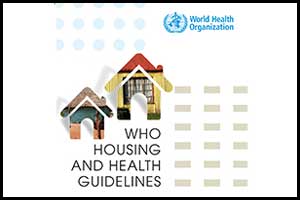- Home
- Medical news & Guidelines
- Anesthesiology
- Cardiology and CTVS
- Critical Care
- Dentistry
- Dermatology
- Diabetes and Endocrinology
- ENT
- Gastroenterology
- Medicine
- Nephrology
- Neurology
- Obstretics-Gynaecology
- Oncology
- Ophthalmology
- Orthopaedics
- Pediatrics-Neonatology
- Psychiatry
- Pulmonology
- Radiology
- Surgery
- Urology
- Laboratory Medicine
- Diet
- Nursing
- Paramedical
- Physiotherapy
- Health news
- Fact Check
- Bone Health Fact Check
- Brain Health Fact Check
- Cancer Related Fact Check
- Child Care Fact Check
- Dental and oral health fact check
- Diabetes and metabolic health fact check
- Diet and Nutrition Fact Check
- Eye and ENT Care Fact Check
- Fitness fact check
- Gut health fact check
- Heart health fact check
- Kidney health fact check
- Medical education fact check
- Men's health fact check
- Respiratory fact check
- Skin and hair care fact check
- Vaccine and Immunization fact check
- Women's health fact check
- AYUSH
- State News
- Andaman and Nicobar Islands
- Andhra Pradesh
- Arunachal Pradesh
- Assam
- Bihar
- Chandigarh
- Chattisgarh
- Dadra and Nagar Haveli
- Daman and Diu
- Delhi
- Goa
- Gujarat
- Haryana
- Himachal Pradesh
- Jammu & Kashmir
- Jharkhand
- Karnataka
- Kerala
- Ladakh
- Lakshadweep
- Madhya Pradesh
- Maharashtra
- Manipur
- Meghalaya
- Mizoram
- Nagaland
- Odisha
- Puducherry
- Punjab
- Rajasthan
- Sikkim
- Tamil Nadu
- Telangana
- Tripura
- Uttar Pradesh
- Uttrakhand
- West Bengal
- Medical Education
- Industry
How Housing impacts health: WHO releases guidelines

New delhi The quality of housing has major implications for people’s health. Poor housing is associated with a wide range of health conditions such as respiratory diseases including asthma, cardiovascular diseases, injuries, mental health and infectious diseases including tuberculosis, influenza and diarrhoea. .
Housing is becoming increasingly important to public health due to demographic and climate changes, according to the latest WHO Housing and health guidelines released recently.
The guidelines provide new evidence-based recommendations on how to reduce major health risks associated with poor housing conditions in 4 areas:
They further identify and summarize existing WHO guidance relevant to housing.
The WHO Housing and health guidelines highlight the significant co-benefits of interventions to improve housing conditions. For example, installing efficient and safe thermal insulation can improve indoor temperatures that support health, while also lowering expenditure on energy and reducing carbon emissions.
Improved housing conditions can save lives, reduce disease, increase quality of life, reduce poverty, help mitigate climate change and contribute to the achievement of a number of Sustainable Development Goals, in particular those addressing Health (SDG 3) and Sustainable Cities (SDG 11). Housing is therefore a major entry point for intersectoral public health programmes and primary prevention.
The WHO Guidelines on Health and Housing can be found here
Housing is becoming increasingly important to public health due to demographic and climate changes, according to the latest WHO Housing and health guidelines released recently.
The guidelines provide new evidence-based recommendations on how to reduce major health risks associated with poor housing conditions in 4 areas:
- Inadequate living space (crowding)
- Low and high indoor temperatures
- Injury hazards in the home
- Accessibility of housing for people with functional impairments.
They further identify and summarize existing WHO guidance relevant to housing.
The WHO Housing and health guidelines highlight the significant co-benefits of interventions to improve housing conditions. For example, installing efficient and safe thermal insulation can improve indoor temperatures that support health, while also lowering expenditure on energy and reducing carbon emissions.
Improved housing conditions can save lives, reduce disease, increase quality of life, reduce poverty, help mitigate climate change and contribute to the achievement of a number of Sustainable Development Goals, in particular those addressing Health (SDG 3) and Sustainable Cities (SDG 11). Housing is therefore a major entry point for intersectoral public health programmes and primary prevention.
The WHO Guidelines on Health and Housing can be found here
Medical Dialogues Bureau consists of a team of passionate medical/scientific writers, led by doctors and healthcare researchers. Our team efforts to bring you updated and timely news about the important happenings of the medical and healthcare sector. Our editorial team can be reached at editorial@medicaldialogues.in.
Next Story


